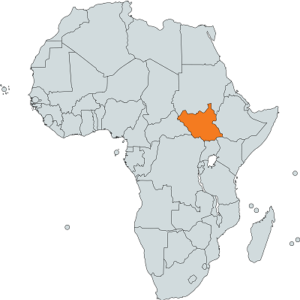South Sudan
Background

South Sudan gained independence in 2011 after a referendum in which its people voted overwhelmingly to secede from Sudan. Independence was the culmination of a long armed struggle waged by South Sudanese starting in the mid 1950s. There are two phases of the armed struggle. The first one started in 1955 and lasted until 1972. The Addis Ababa Agreement of 1972, which ended the first phase of the armed struggle, granted self-government to the South Sudanese within the Sudanese state. Relative peace returned to the South during this period. However, in 1983, the second phase of the conflict was launched when two predominantly South Sudanese battalions of the Sudanese army mutinied in the towns of Bor and Ayod.
These two battalions formed the nucleus of the Sudan People’s Liberation Army/Movement. Initially, the SPLM sought to redefine the political landscape in Sudan by calling for the establishment of a “New Sudan” that was secular and democratic in outlook. Although its political base was in the southern part of the country, the SPLM sought to build a mass movement across Sudan to achieve its objective of a “New Sudan.” To this end, the SPLM extended its presence into Southern Kordofan and Blue Nile, two areas considered part of Northern Sudan. An attempt to establish a foothold in Darfur in the early 1990s was thwarted by the Sudanese army.
In 1994, the SPLM embraced the concept of self-determination for South Sudan, three years after it suffered a major ideological split within its ranks. In subsequent talks with the Sudanese government, self-determination was included in the agenda for peace negotiations. Finally, in 2005, both sides in the Sudanese conflict reached a peace deal under the auspices of a regional body called the Inter-Governmental Authority on Development (IGAD). Although the agreement recognized the right of self-determination for South Sudanese, it also prioritized the unity of Sudan. In that respect, it stipulated autonomy for South Sudan for a period of five years in order to give South Sudanese and their Northern Sudanese counterparts a chance to be united as one country.
Current Developments
Two years after independence, South Sudan was plunged into deadly conflict pitting forces loyal to President Salva Kiir and against the armed opposition led by Riek Machar. The conflict continues unabated after a peace deal signed in August 2015 collapsed in July 2016. The inadvertent consequence of the collapse of the peace agreement has resulted in the birth of new armed groups that are opposed to the government. Subsequently, South Sudan continues to dominate the agenda of the United Nations Security Council due to its war-induced fragility.
In February 2016, the UN announced that a famine was unfolding in the country. Nearly 5 million people, which represents more than 40 percent of the South Sudan’s population, are now at risk of starvation due to what the UN calls a “man-made” famine induced by the war. Currently, aid agencies have launched a massive campaign to mitigate the impact of the famine. According to the UN, the number of food insecure people will increase to 5.5 million if efforts to arrest the severity and spread of the food crisis are not successful. About a million children across South Sudan are severely malnourished and at risk of death unless they receive immediate help. Efforts to get aid to the needy are however hampered by the main actors’ obstruction of free movement of aid workers. The war has caused massive displacement. An estimated 1.5 million people have sought refuge in neighboring countries, while 1.85 million are internally displaced. Meanwhile, the South Sudanese economy is in free-fall. A global glut in oil production in the last two years drastically reduced the country’s ability to generate sufficient money from oil, its sole revenue earner. The South Sudanese pound has lost nearly 95 percent of its value. Public servants endure long months without being paid.
Recommendations
South Sudan’s war is due to a fall-out between rival factions of the ruling SPLM. At independence, the SPLM political elites installed a system that the Enough Project calls a violent kleptocracy. In this system, corruption is not an anomaly but the very basis of the government itself. Institutions for checks and balances were coerced to serve the personal beneficial interests of elite politicians. Subsequently, factions emerged in the SPLM vying for control of the state. Poor management of the expectations of these factions resulted in the contest for state capture being expressed in violent terms. Ultimately, a solution to the conflict must aim at dismantling the incentive structure in place that benefits elite politicians and their networks of collaborators.
Various attempts to realize peace in South Sudan have failed. The missing ingredient is leverage that will dissuade the country’s politicians from pursuing war in favor of peace.
To that effect, the Enough Project recommends the use of the following pressures:
- Highly targeted and aggressively enforced sanctions aimed at leading government and private officials and entities, along with their corresponding networks, which can include family members complicit in hiding funds or in acting as shareholders in companies controlled by the officials. These sanctions would include both asset freezes and travel bans.
- Anti-money laundering tools that focus on supporting efforts by banks to freeze offenders out of the international financial system.
- Asset recovery mechanisms including civil actions and prosecutions that lead to the freezing, seizing, and returning of assets stolen by war leaders and their international collaborators.
- Aggressive Foreign Corrupt Practices Act enforcement.
You can learn more about these pressures here.

